
Contributed by Adam Simon / I happened to visit Mary Carlson’s exhibition “Garden” at Kerry Schuss Gallery the day I finished reading Titus Groan, the first of Mervyn Peake’s Gormenghast novels, written in the 1950s. I’m not usually drawn to fantasy fiction – this book was a gift – but Peake’s dreamlike rendering of a forbidding castle with clinging ivy and bizarre inhabitants had me in thrall, primed to receive Carlson’s medieval world and its symbiotic relationships between plants and people. One of the characters in Titus Groan uses the ivy to scale the castle walls, while two others take tea on a tree that grows horizontally out one of the windows. While not exactly ivy, vines fashioned from copper piping figure prominently in “Garden,”often dwarfing the mostly female glazed porcelain saints that sit on modest carved wooden shelves. The untamed power of the natural world, and humanity’s marginal presence in it, is an underlying theme in “Garden” and very like the world described by Peake.
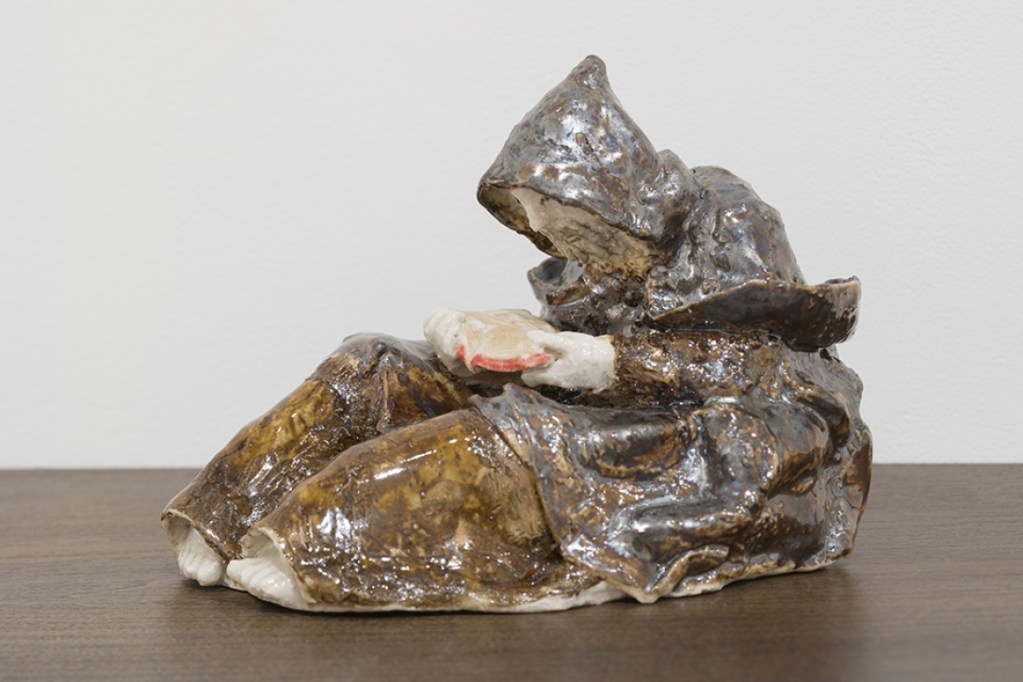
Carlson’s art resists easy classification. Her embrace of the genre of porcelain figurines doesn’t mesh with the preoccupations of most artists in New York. Her sculptures could almost be situated within the $4 billion global industry of devotional objects, except that the aesthetic feels wrong. The modeling and glazing are too abbreviated, her people too fleshy, almost comical, with impressionistic dabs for features. Sources for her figures come from the likes of El Greco, Giotto, Memling, and Zubaran, the metallic vines from drawings in medieval manuscripts. Somehow none of it feels arcane or nostalgic.
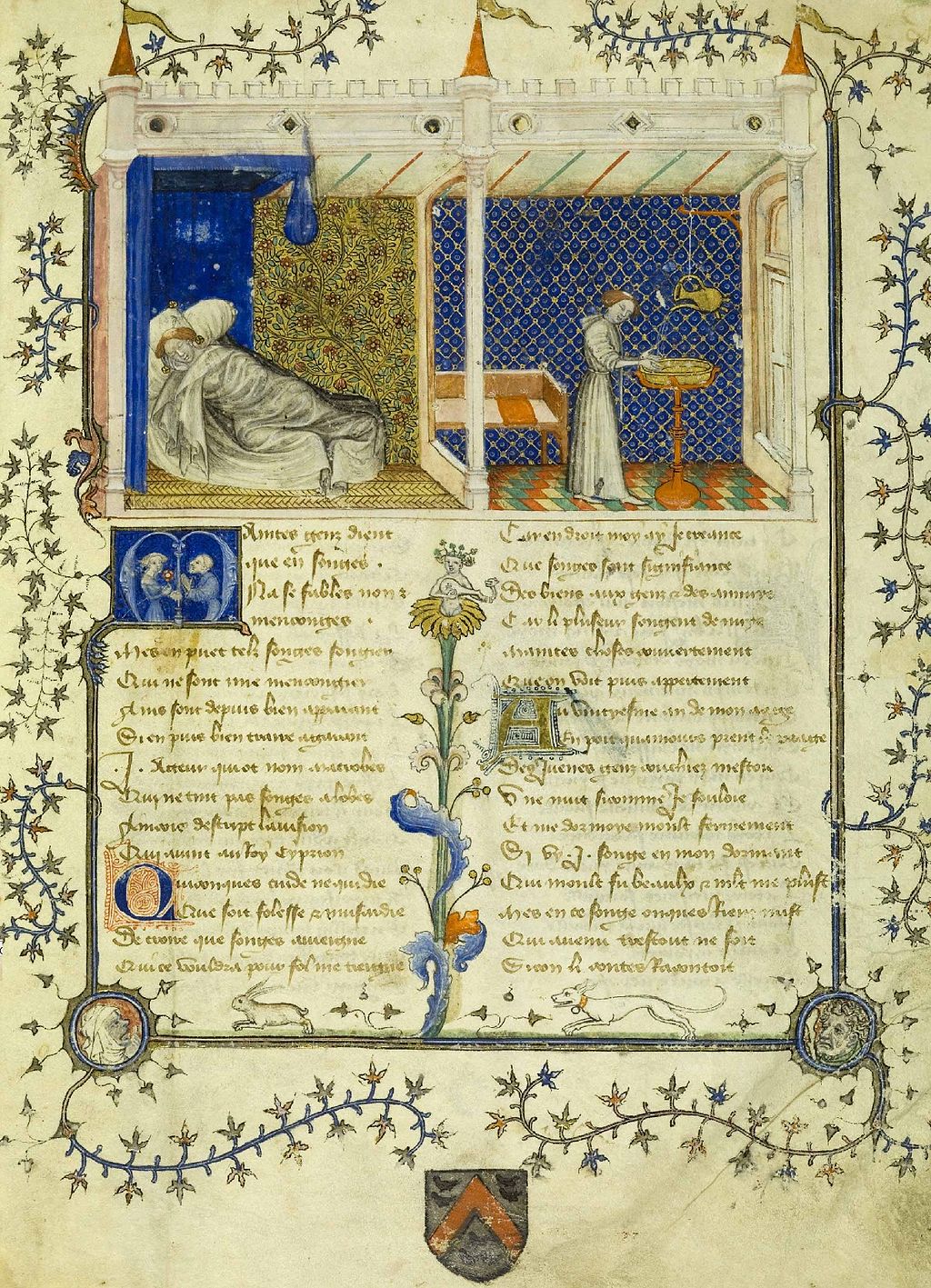

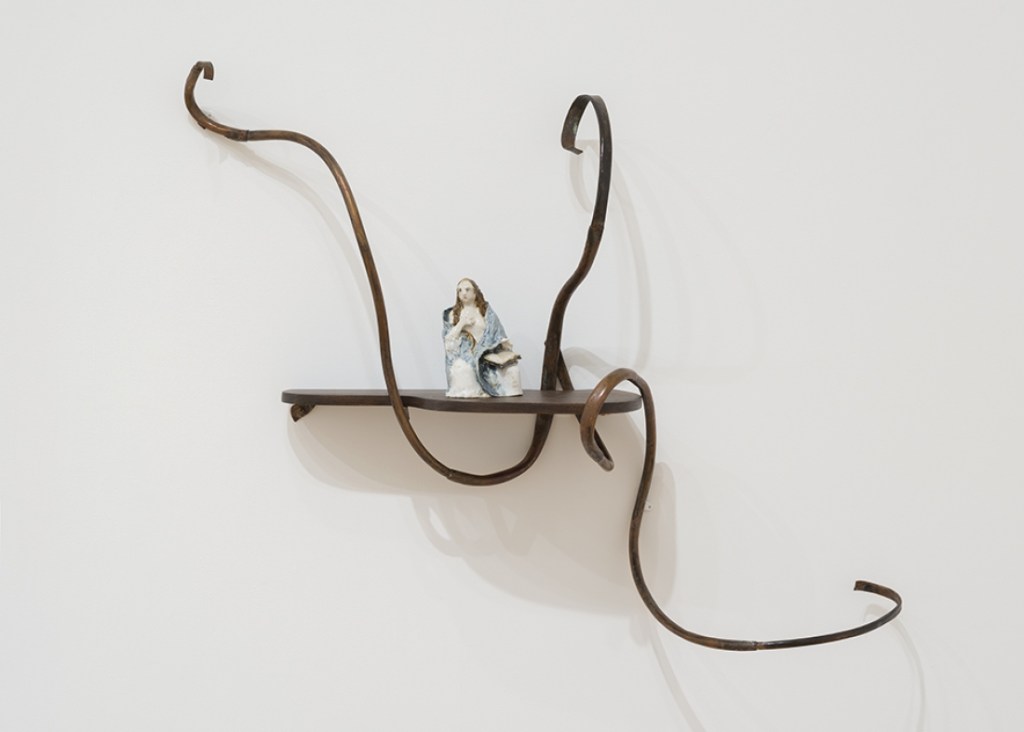
This is the first time Carlson hasn’t displayed her figurines on pedestals. They sit on irregularly carved wooden shelves, intertwined with the spiraling vines. Metal workers have been shaping copper for millennia, but I’m pretty sure Carlson uses the actual copper pipe that a Catskills homeowner like herself might have on hand. Out of it she creates beautiful, flowing forms that maintain the material’s identity as a vessel designed to carry fluids. Some are disconnected from human figures, sprouting porcelain flowers. There are also sculptures of single flowers on curling shoots. Nature dominates. Carlson’s flowers take their place in the recent resurgence of floral imagery in art galleries – prompted, no doubt, by climate change and a heightened awareness of the fragility of nature in the Anthropocene.
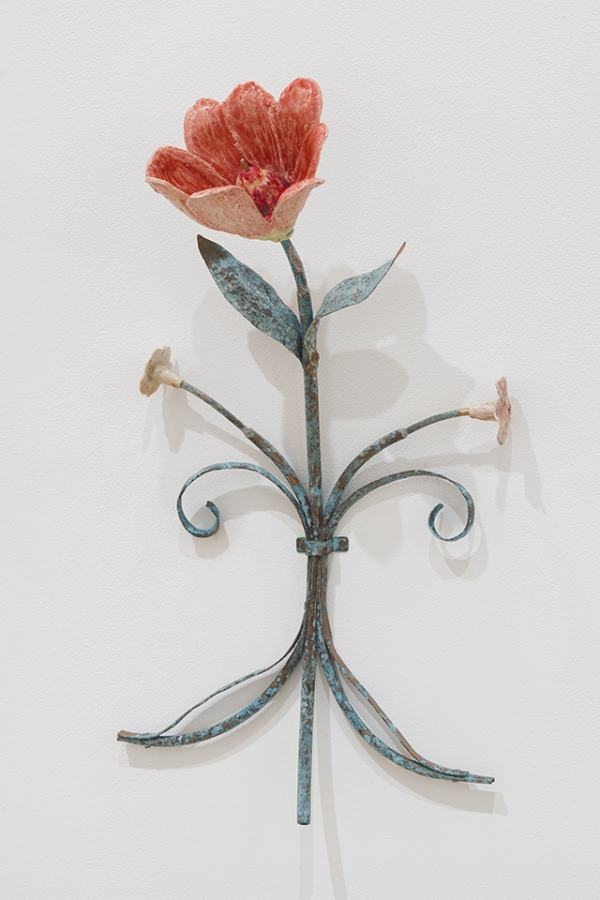

The diminutive figures would occupy supporting roles except that they have the stories. Mary of Egypt was a prostitute who lived as a hermit in the desert for forty years, a demon appears caught by the wire that suspends him, pensive Eve contemplates the apple, Mary Magdalene, Saint Anthony reading in the desert. One wonders what drew Carlson to this cast of characters. Was it that the female saints represent women unbound by patriarchal norms, the male saints a kind of idealized androgyny? Perhaps. But this interpretation, like the one connecting flowering vines to climate change, doesn’t fully explain the complex psychic environment of “Garden,”which radiates more reverence than irony but some of both.
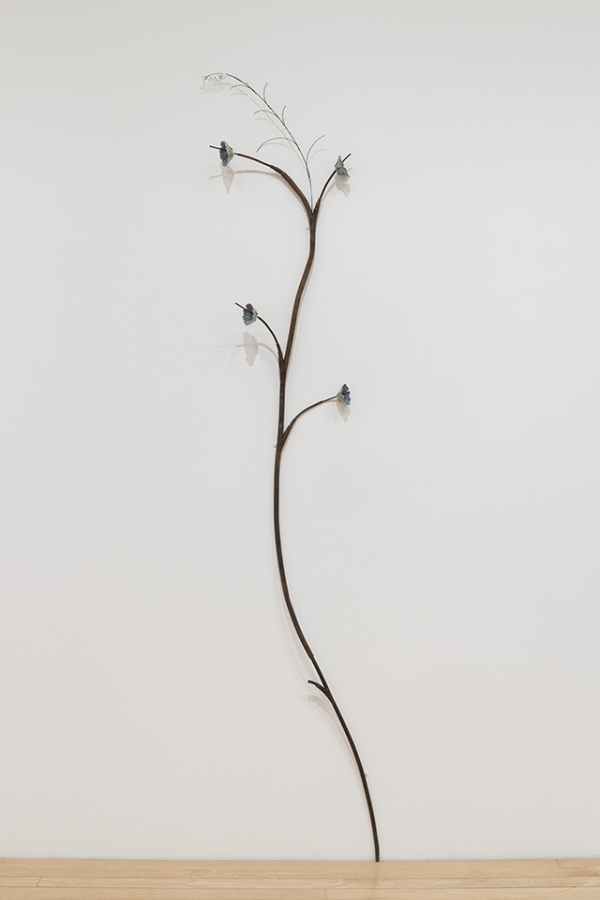
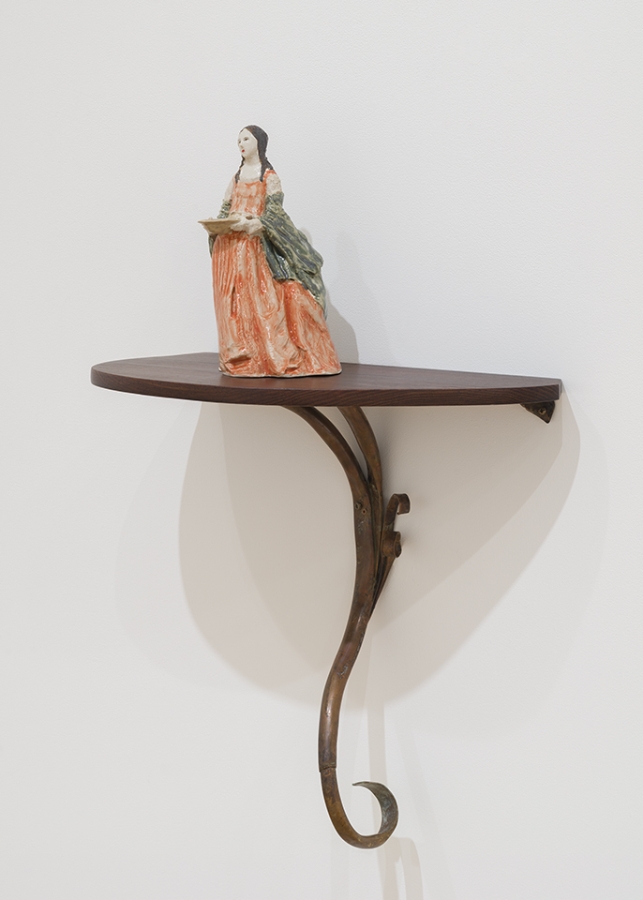
Carlson’s sources – iconic paintings from hundreds of years ago, marginalia from ancient religious texts – would have been seen in a Christian religious context in their own time. The exhibition deals with penance, the struggle between good and evil and the complex world of religious faith. It’s difficult to say how close or far we are from the feelings that El Greco or Giotto inspired in viewers of their own time. Now as much as then, the viewer completes the work.
“Mary Carlson: Garden,” Kerry Schuss Gallery, 73 Leonard Street, New York, NY. Through April 27, 2024.
About the author: Adam Simon is a New York artist and writer. His recent paintings combine corporate logotypes, stock photography, and tropes of modernist design.























